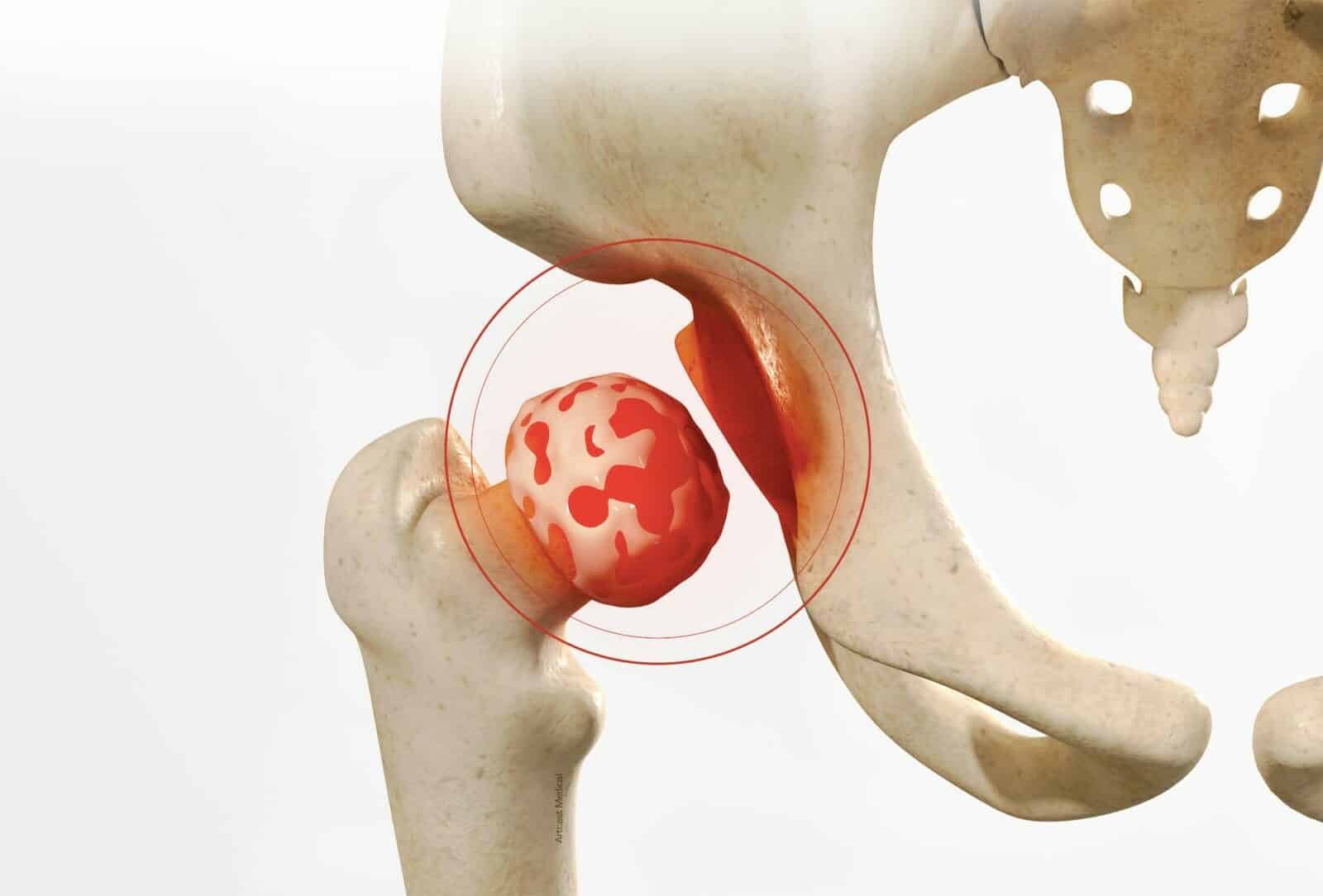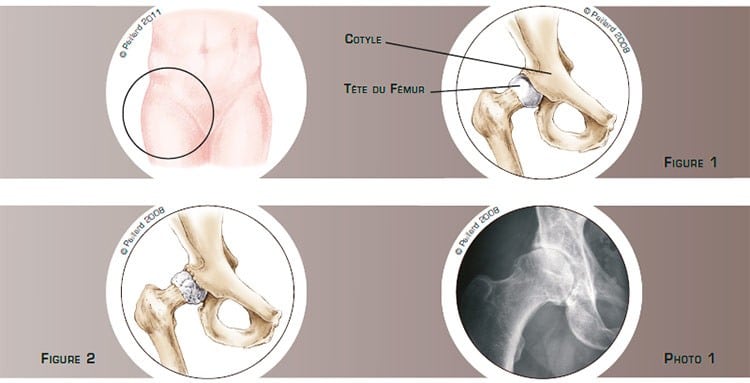Total hip replacement
You have hip osteoarthritis
You are going to undergo anterior approach total hip replacement

You have hip osteoarthritis
You are going to undergo anterior approach total hip replacement
Total hip replacement
The hip is the joint between the pelvis and the femur. The top of the femur forms a head which pivots in a socket in the pelvis called the acetabulum. The sliding surfaces are lined with cartilage (figure 1), and there are numerous muscles and tendons surrounding the capsule which ensure hip mobility and a balanced gait. Osteoarthritis is the wear and tear of the cartilage on the sliding surfaces. This wear and tear is also accompanied by modifications of the femur and the acetabulum (figure 2, photo 1). These modifications cause pain in the hip as well as stiffness and limping, which requires the use of anti-inflammatories, painkillers and sometimes a walking stick.

The wear of the cartilage is irreversible and osteoarthritis does not heal spontaneously. The natural progression is the gradual deterioration of the joint, with increasingly limited mobility and increased difficulty in walking. The anti-inflammatories and painkillers that were enough to start with are no longer effective, and so the question of surgery is raised. The aim of the operation is to relieve the pain, recover mobility and return to normal walking.
The objective of hip replacement is to remove the areas of bone and cartilage that are worn, and to replace them with artificial parts of the same shape. This procedure is carried out using an anterior approach. This technique, although it is attracting increasing interest, is far from being new as it was developed over 50 years ago in Paris. It spares the hip muscles thus enabling faster post-operative recovery and a better stability of the prosthesis.

A short incision is made in the anterior part of the hip.
A passage is created between the various muscles by moving them aside to access the joint (figure 3).

The femoral head is removed (figure 4), then the femur bone (figure 5) and the acetabulum (figure 6) are prepared to receive the prosthesis. The prosthesis is made up of two components: the socket, a hollow hemispherical component in the pelvis, and the stem with the ball, which is implanted in the femur. The ball replaces the femoral head and articulates with the socket (figure 7, photo 2).

The operation lasts about 1 hour on average, and requires around 5 days in hospital. Total hip replacement is carried out under spinal or general anaesthesia. Your anaesthesiologist will decide with you the best type of anaesthesia according to your state of health. After the operation, the incisions are covered with a sterile dressing, which is left in place for 10 days. The pain will be managed and monitored very closely during the post-operative period, and the treatment will be adjusted accordingly.
The surgical technique used spares the hip muscles resulting in optimal implant stability, and so no gesture or specific movement is prohibited. The day after the operation, the physiotherapist will get you up and help you to walk. Walking sticks will be useful during the first few days, but are often abandoned before leaving the clinic. You can go up and down stairs within 3 days. Except for very specific cases, it is not necessary to go to a rehabilitation centre or a physiotherapist’s after your stay in hospital. A rapid resumption of your activities is your physiotherapy.
Driving can be envisaged rapidly, and you can generally return to work after the 1st month, depending on your profession; office work can be sooner.
You can progressively resume sports activities after the 1st month.
In addition to the risks associated with any surgery and the anaesthetic, there are some risks specific to this surgery :
The aforementioned list of risks is not exhaustive. Your surgeon can provide you with any additional explanations and will be available to discuss the advantages, disadvantages and risks of each specific case with you.
The results of this technique are very encouraging as an often spectacular disappearance of the pain along with a rapid recovery of mobility and muscle strength are observed. Normal walking with no limping is generally achieved within one month post-op.
Even if the result is impressive and that many patients forget they have had a hip replacement, it is however preferable to avoid physical work and violent sports as these activities can increase the wear and decrease the lifespan of the prosthesis despite the use of new, more resistant materials. Some activities like cycling, swimming, golf or walking are possible, and even recommended, whereas care should be taken with skiing, tennis and jogging.
The average lifespan of a hip replacement is about 20 years.
With the progress in the materials used today, we hope that the results and the longevity will continue to improve.
Laissez votre commentaire